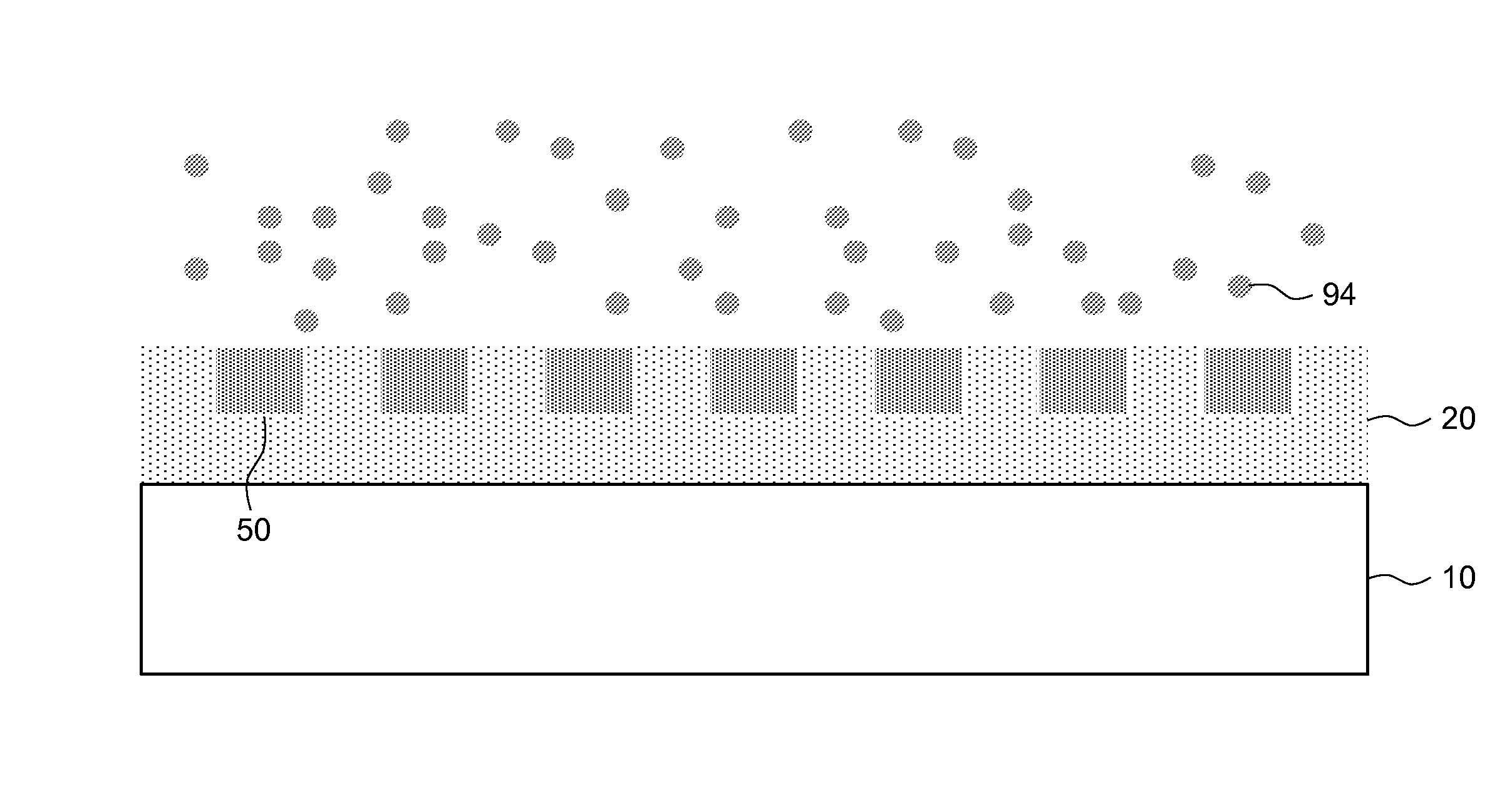Method of forming conductive films with micro-wires
a technology of conductive films and micro-wires, which is applied in the field of forming conductive films with micro-wires, can solve the problems of significant reduction of the conductivity of micro-wires, inability to readily form dispersions into conductive compositions, and limited electrical conductivity generated by such conductive compositions, and achieves excellent optical properties, low distortion, and desired uniformity
- Summary
- Abstract
- Description
- Claims
- Application Information
AI Technical Summary
Benefits of technology
Problems solved by technology
Method used
Image
Examples
##ventive example 1
INVENTIVE EXAMPLE 1
Forming a Conductive Film Comprising Micro-Wires
[0131]A poly(ethylene terephthalate) film having a thickness of about 125 μm was surface treated with a poly(vinylidene chloride) containing latex to form an adhesion promotion subbing layer. A coating solution consisting of 34.0 g of Epon resin SU-8, 6.0 g of Coatosil MP-200, 4.8 g of triarylsulfonium hexafluorophosphate salts (mixed), 50% in propylene carbonate, and 55.2 g of methyl ethyl ketone (MEK) was applied as a photocurable composition over the subbing layer and dried to form a photocurable layer having a nominal dry thickness of about 12 μm. The resulting dry film photocurable surface was then laminated with a protective sheet of approximately 25.4 μm thick having one of its surfaces treated with silicone release coating. The protective sheet can be readily separated from the photocurable layer.
[0132]The photocurable layer on the substrate was pressed against a transparent PDMS mold made of Dow Corning Sylg...
PUM
| Property | Measurement | Unit |
|---|---|---|
| temperature | aaaaa | aaaaa |
| humidity | aaaaa | aaaaa |
| width | aaaaa | aaaaa |
Abstract
Description
Claims
Application Information
 Login to View More
Login to View More - R&D
- Intellectual Property
- Life Sciences
- Materials
- Tech Scout
- Unparalleled Data Quality
- Higher Quality Content
- 60% Fewer Hallucinations
Browse by: Latest US Patents, China's latest patents, Technical Efficacy Thesaurus, Application Domain, Technology Topic, Popular Technical Reports.
© 2025 PatSnap. All rights reserved.Legal|Privacy policy|Modern Slavery Act Transparency Statement|Sitemap|About US| Contact US: help@patsnap.com



